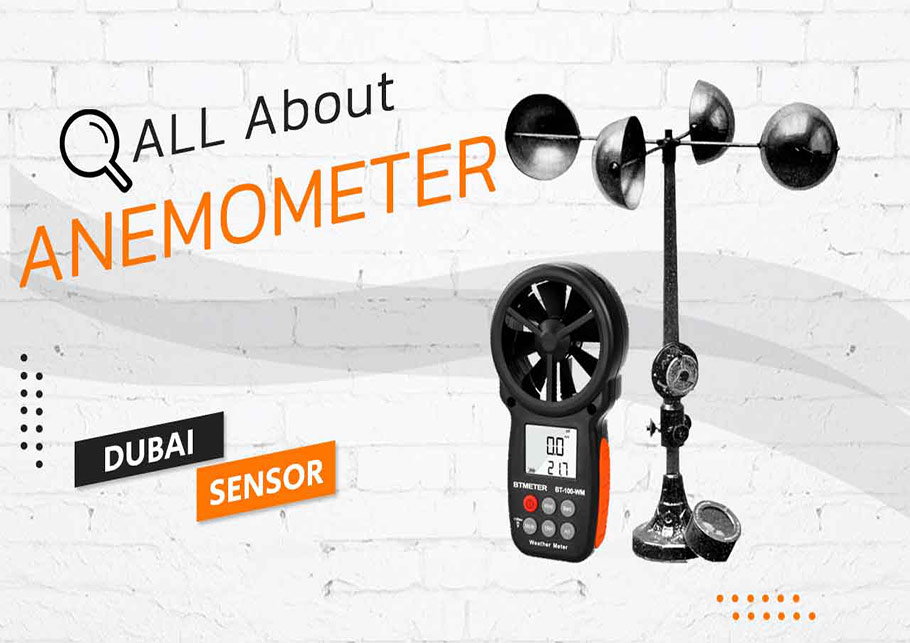All You Required to Find Out About Anemometers: How They Function, Why They Matter, and Where to Make use of Them
Anemometers, however frequently overlooked in the world of scientific tools, play a vital duty in various areas, offering valuable insights into wind rate and air flow patterns. Recognizing the mechanics behind these tools is vital for anyone seeking to harness the power of this data. From meteorologists tracking weather condition patterns to designers developing frameworks with wind lots in mind, the applications of anemometers are significant and diverse. As we look into the ins and outs of anemometer technology, we will reveal the internal operations of these devices, their relevance, and the vital considerations when choosing the appropriate anemometer for specific applications.

Anemometer Basics
A crucial instrument used to gauge wind rate and direction, the anemometer plays a crucial duty in meteorology and numerous industries. An anemometer typically is composed of three or four mugs that rotate in the wind, a vane that directs into the wind, and sensors to track the turnings or movements.
There are various kinds of anemometers readily available, consisting of cup anemometers, vane anemometers, hot-wire anemometers, and sonic anemometers, each with its one-of-a-kind features and applications. Mug anemometers are commonly used for fundamental wind rate measurements, while vane anemometers are preferred for directional dimensions.
Principles of Anemometer Operation
Structure on the fundamental understanding of anemometer essentials, the principles of anemometer operation clarify the auto mechanics behind wind rate and instructions measurements. Anemometers operate the concept of air flow impacting a sensor, causing it to turn. Cup anemometers, for example, have 3 or more mugs that capture the wind, creating them to rotate quicker as the wind rate increases. The turning speed is then converted into a wind speed measurement. Vane anemometers, on the other hand, use a tail or a probe that aligns itself with the wind direction, giving a measurement of wind instructions based on the positioning of the sensing unit. Hot-wire anemometers count on a warmed cable that cools down as wind passes over it, with the price of cooling down establishing the wind speed. Ultrasonic anemometers procedure wind speed and instructions by assessing the moment it considers ultrasonic signals to take a trip between transducers. Recognizing these principles is essential for reliable and accurate wind dimensions in different applications.
Importance of Anemometers
Anemometers play a here are the findings critical duty in gauging wind rate and instructions, giving crucial information for climate projecting, environment research studies, environmental monitoring, and aviation operations. Meteorologists count on anemometers to collect exact wind data, assisting them understand weather patterns, predict tornados, and concern timely cautions to the public. Wind ranch operators use anemometers to assess wind other conditions and make the most of electricity production from wind generators.
Applications Throughout Different Industries
In the renewable energy sector, anemometers play a vital duty in analyzing wind problems for wind farm placements, making sure ideal energy production. Industries like building and construction and mining utilize anemometers to monitor wind speeds, essential for safety protocols, especially when working at elevations or in open-pit mines where solid winds can present dangers. In agriculture, anemometers assist farmers in managing plant splashing by supplying real-time data on wind speed to stay clear of drift.

Selecting the Right Anemometer for Your Demands
For basic objectives, a mug anemometer is appropriate for determining wind speed, Full Article while a vane anemometer supplies wind direction information. Hot-wire anemometers are ideal for reduced airspeed dimensions, and ultrasonic anemometers offer high precision and longevity.

Verdict
In final thought, anemometers play a crucial function in determining wind rate and direction across different sectors. It is vital to think about the relevance of anemometers in order to make enlightened decisions when choosing the most appropriate tool for gauging wind conditions.
There are various types of anemometers offered, consisting of mug anemometers, vane anemometers, hot-wire anemometers, and sonic anemometers, each with its unique features and applications. Cup anemometers are typically made use of for standard wind rate dimensions, while vane anemometers are preferred for directional measurements. Hot-wire anemometers are suitable for low airspeeds, and sonic anemometers are optimal for high-precision dimensions in research study and commercial setups.Structure on the fundamental understanding of anemometer fundamentals, the concepts of anemometer procedure illuminate the auto mechanics behind wind speed and instructions measurements. For general purposes, a cup anemometer is ideal for measuring wind rate, while a vane anemometer provides wind instructions information.